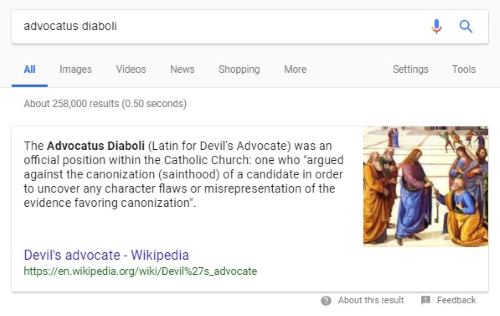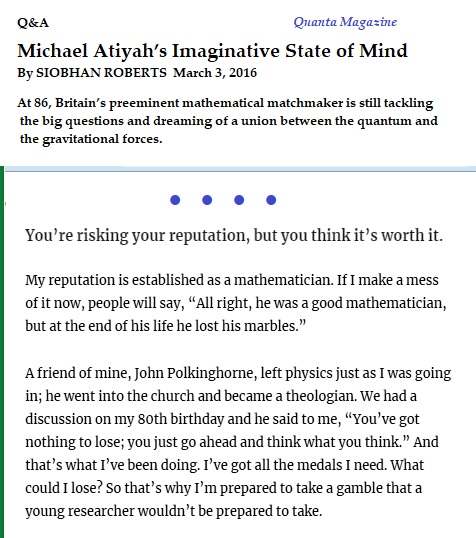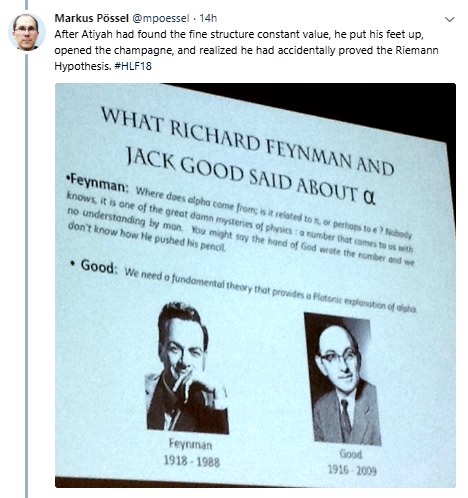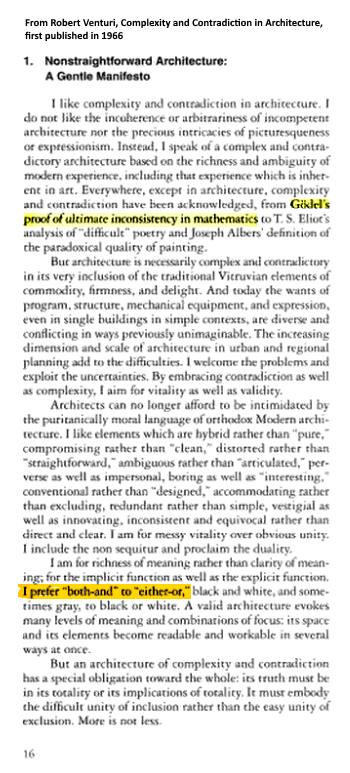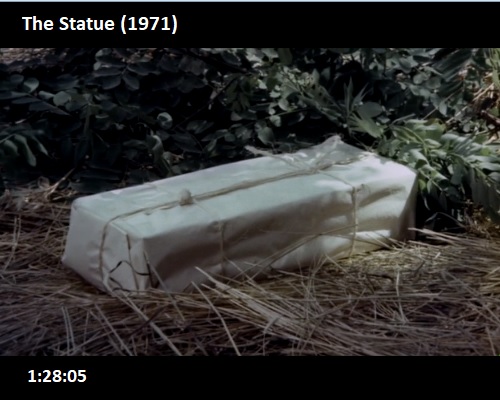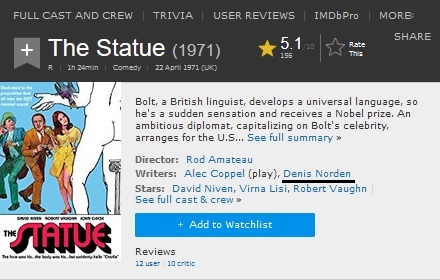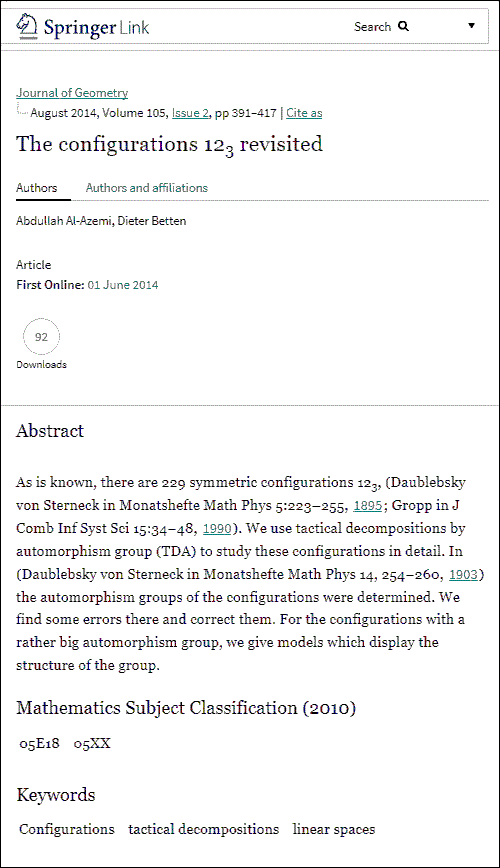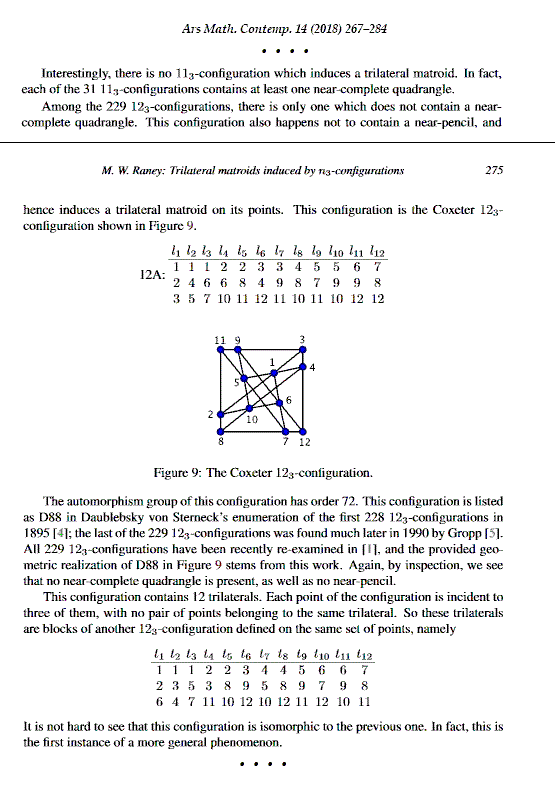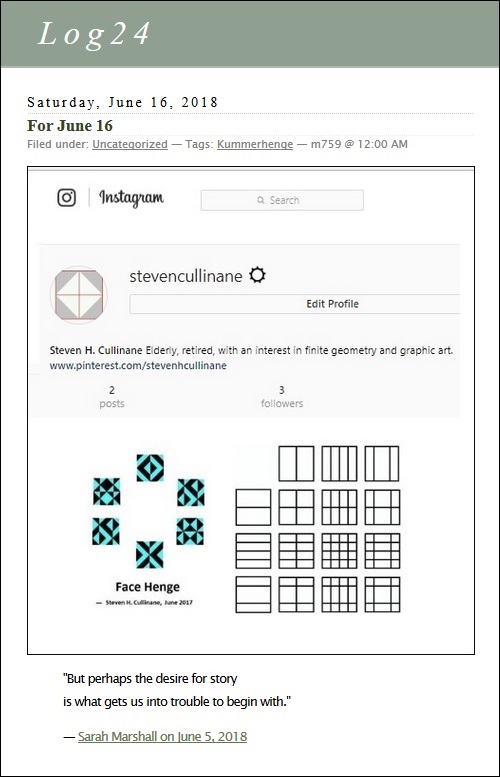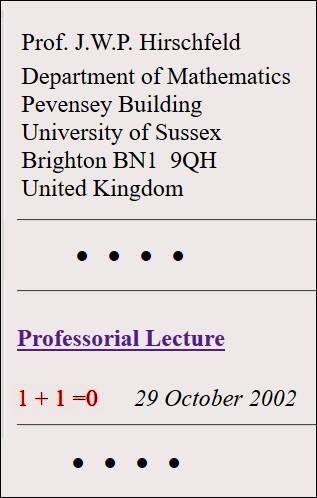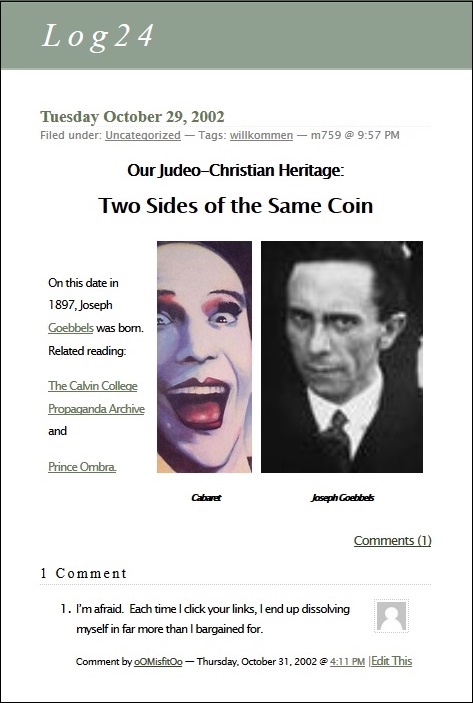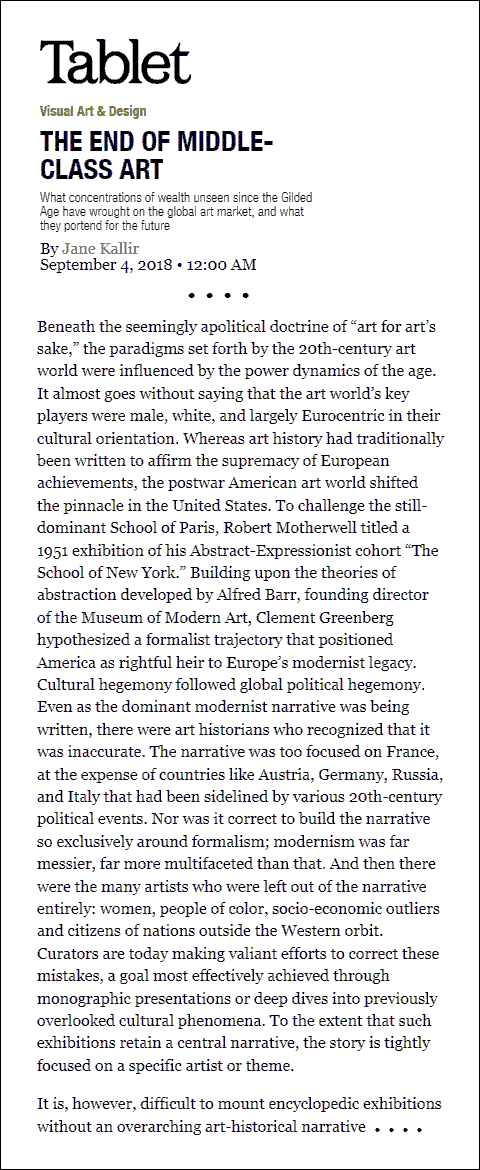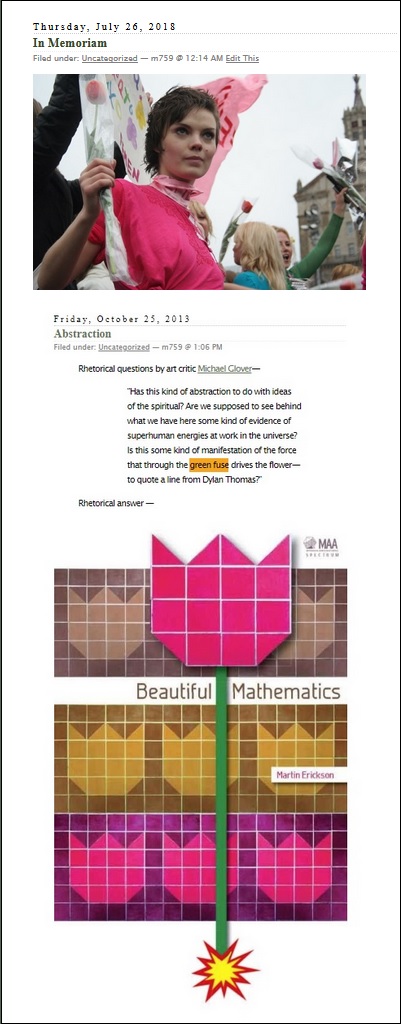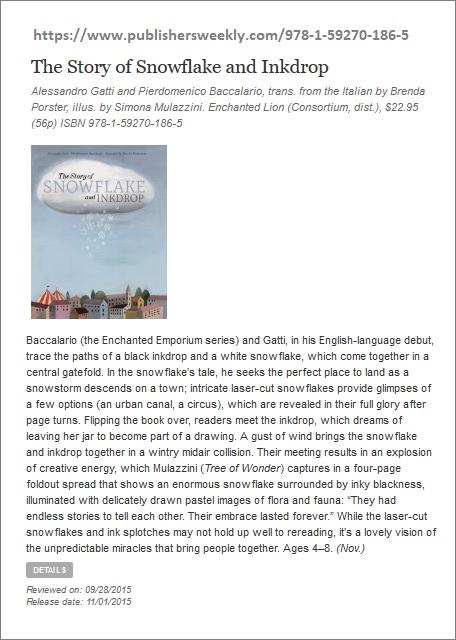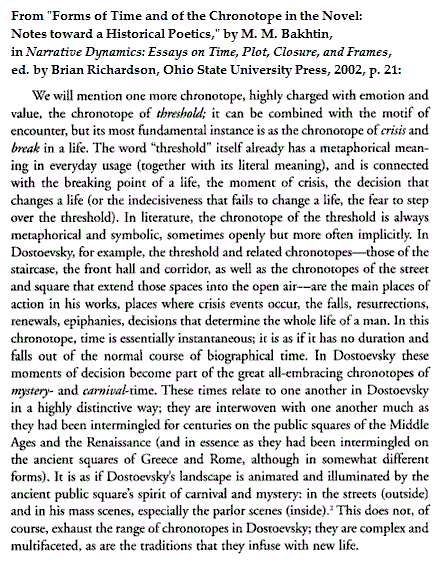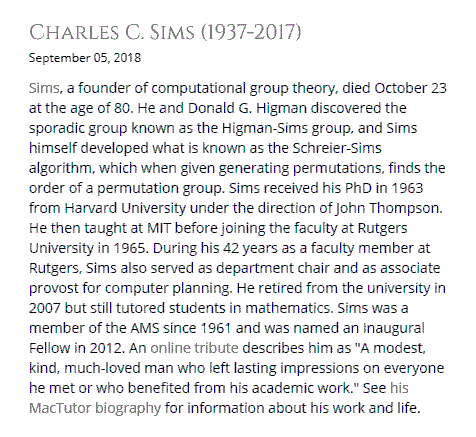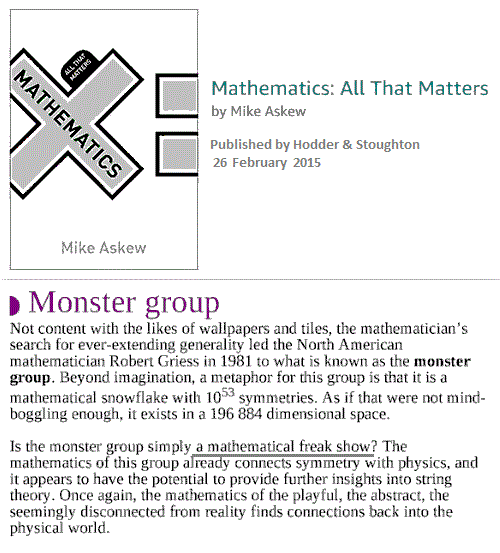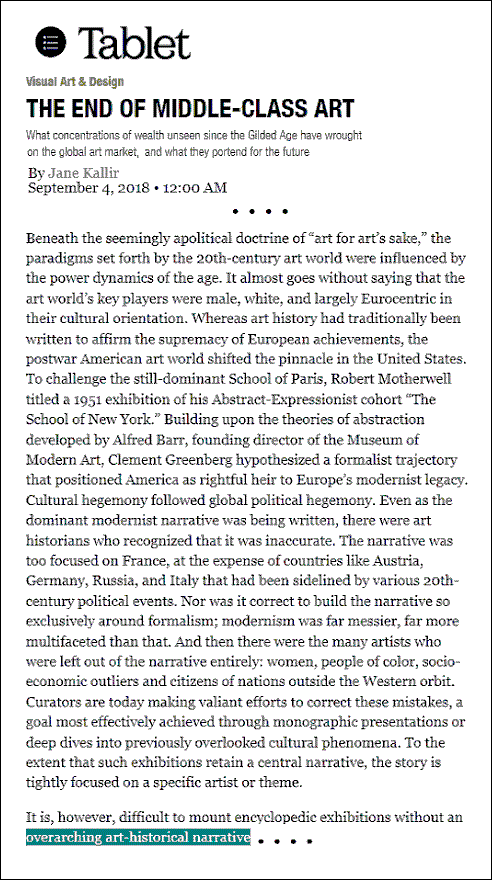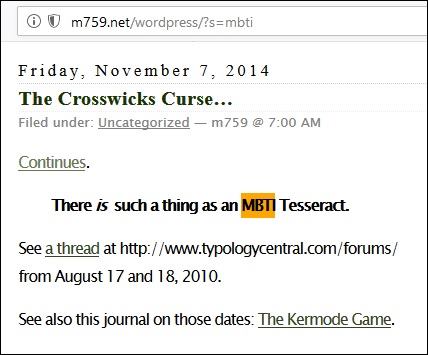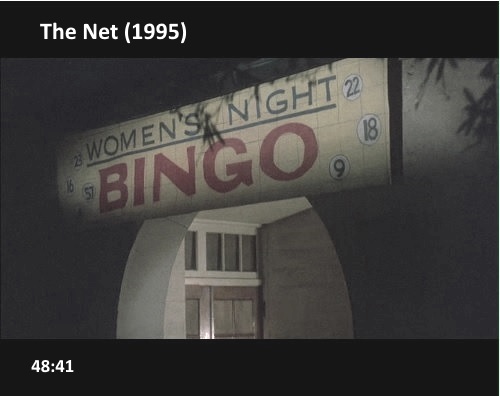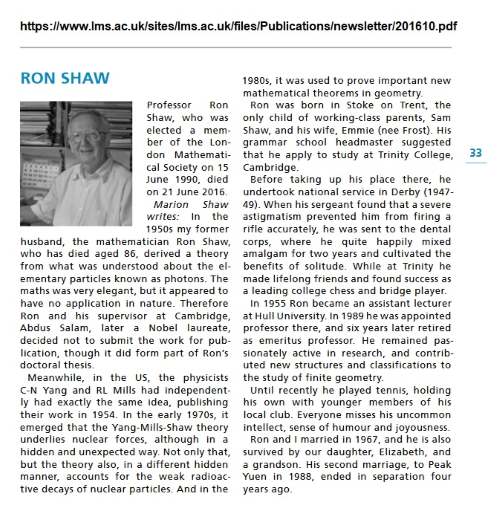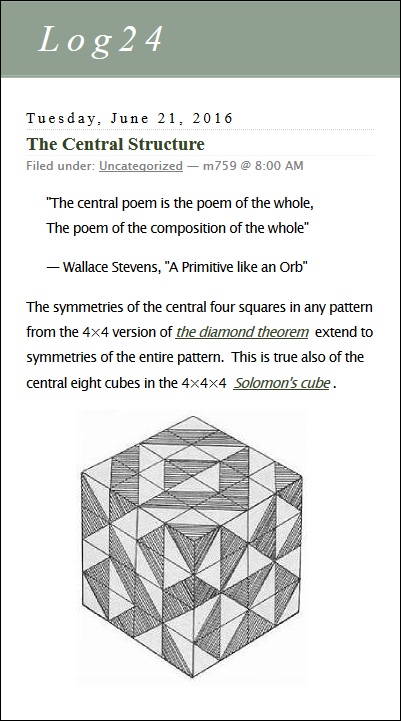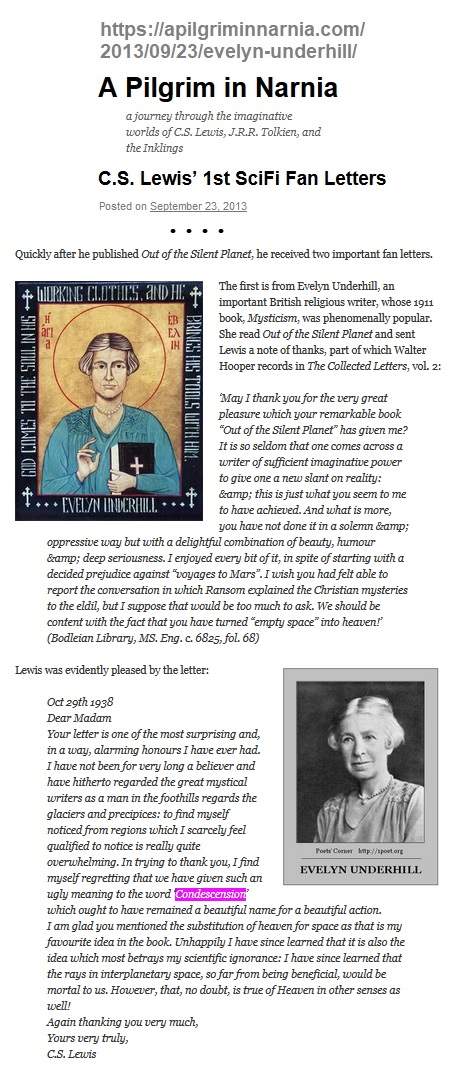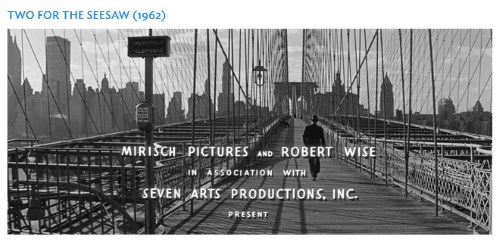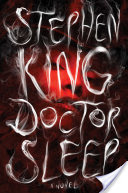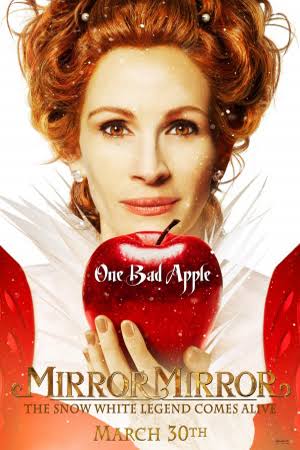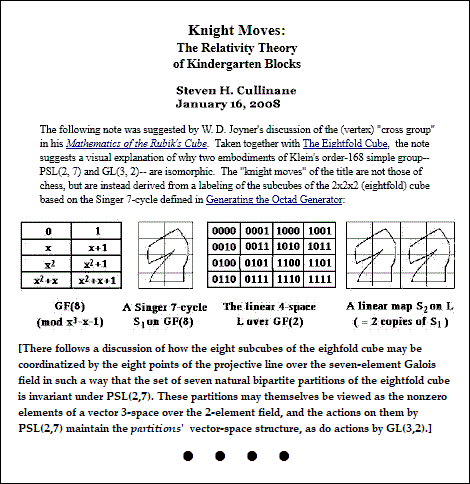For a more academic meditation, see University Diaries today.
Thursday, October 11, 2018
Bum Tip
Adcraft
The word "adcraft" in the previous post suggests adman Cary Grant
in "North by Northwest," which in turn suggests a Log 24 post from
Tuesday, March 4, 2014:
Quotation
|
That post was suggested by . . .
See also Log24 posts of Sunday, March 2, 2014 — Oscar Day.
Spelling
Related adcraft — "Harry Potter and the Philosopher's Stone"
became, for the U.S. market, "… and the Sorcerer's Stone."
Wednesday, October 10, 2018
Witch Luck *
“Crossword Omen” Continues.
An image from earlier Log24 posts tagged Crossword Omen —
Portrait, in the 2013 film Oblivion , of a 2005 graduate
of London's Royal Academy of Dramatic Art —
London derrière.
Puzzlement
On the answers to the puzzle discussed here last night —
"Look, this is a complicated theme, but it was no help to me
while solving and feels like an elaborate joke that the teller
has to explain, where you're like 'Oh … yeah, that's clever.'
But you didn't laugh."
— Today's "Rex Parker Does the NYT Crossword Puzzle"
A Stitch in Time
The above October 7th screenshot is of a New York Times ad in the
"Business Day" section that accompanied a story with the headline
"Pret a Manager . . . ." [sic ].
The error was corrected:

Tuesday, October 9, 2018
Nicht Spielerei
A YouTube description —
"Walter Klien performing Mozart's 12 Variations in C Major
on the French Song: "Ah vous dirai-je, Maman" K.265 on
the piano. Used in Twinkle Twinkle Little Star, Baa Baa
Black Sheep, and the Alphabet Song."
https://www.youtube.com/watch?v=fS7yiD6cz8A —
"Published on May 23, 2010"
See also this journal on May 23, 2010 —
Posts now tagged Death Story.
Related material —


Monday, October 8, 2018
Four Slashes
"Four slashes of one size fits all.
It should not fit you."
— Alyssa Milano, "A Survivor's Prayer"
Milano's reference was to the hashtag symbol.
For another view of this symbol, see Pound Sign.
Some less popular "four slashes" art from Milan —

Oktoberfest

Note that some have to stop and some don't.
This journal on the above date, 5 July 2008 —
"Review by Charles Isherwood in today’s New York Times :
A god deserves a great entrance. And Dionysus, the god of wine
and party boy of Mount Olympus, whose celebratory rituals got
the whole drama thing rolling in the first place, surely merits a
spectacular one….”
Sunday, October 7, 2018
In the Bag
Saturday, October 6, 2018
Friday, October 5, 2018
The “Ignotiles” of Paul Hertz
The above figure illustrating 24 permutations is dated "2007."
An earlier permutations figure, archived on June 17, 2006 —
An illustration of the above title "I Want To Be a Mathematician" —
Wanting does not make it so.
Thursday, October 4, 2018
Mage Studies: Art vs. Bullshit
Art Trail
“There’s always a place at the edge of our knowledge,
where what’s beyond is unimaginable, and that edge,
of course, moves.” — Physicist Leon Lederman in
The New York Times yesterday afternoon.
An image from Florence, SC —
Click image for related material.
Wednesday, October 3, 2018
Nobel Literature Prize
The New York Times today —
Leon Lederman, 96, Explorer (and Explainer) of
the Subatomic World, Dies
By George Johnson
Oct. 3, 2018
Leon Lederman, whose ingenious experiments with particle accelerators
deepened science’s understanding of the subatomic world, died
early Wednesday in Rexburg, Idaho. He was 96.
His wife, Ellen Carr Lederman, confirmed the death, at a care facility.
She and Dr. Lederman, who had long directed the Fermi National Accelerator
Laboratory outside Chicago, had retired to eastern Idaho.

"… novelist, poet and minister George MacDonald . . . ."
See as well Jess Lederman, Investment Banker.
"I have three children with my first wife, Florence Gordon.
Daughter Rena is an anthropologist,
son Jesse is an investment banker
and daughter Rachel a lawyer."
— Leon Lederman at nobelprize.org.
Tuesday, October 2, 2018
Raiders of the Lost Crucible
See other posts now tagged Crucible Raiders.
Related entertainment —
From YouTube:
From NBC:
For more from the above date,
Oct. 8, 2016, click "seriously" below.
But seriously —

Sunday, September 30, 2018
Iconology of the Eightfold Cube
Found today in an Internet image search, from the website of
an anonymous amateur mathematics enthusiast —
Forming Gray codes in the eightfold cube with the eight
I Ching trigrams (bagua ) —
This journal on Nov. 7, 2016 —
A different sort of cube, from the makers of the recent
Netflix miniseries "Maniac" —

See also Rubik in this journal.
Saturday, September 29, 2018
“Ikonologie des Zwischenraums”
The title is from Warburg. The Zwischenraum lines and shaded "cuts"
below are to be added together in characteristic two, i.e., via the
set-theoretic symmetric difference operator.
Friday, September 28, 2018
ART WARS Midrash
"When times are mysterious
Serious numbers
Will always be heard."
— Paul Simon,
"When Numbers Get Serious"
"There is a pleasantly discursive treatment of
Pontius Pilate's unanswered question 'What is truth?'"
— H. S. M. Coxeter, introduction to Richard J. Trudeau's remarks
on the "story theory" of truth as opposed to the "diamond theory"
of truth in The Non-Euclidean Revolution (1987)
The deaths of Roth and Grünbaum on September 14th,
The Feast of the Holy Cross, along with Douthat's column
today titled "Only the Truth Can Save Us Now," suggest a
review of …
Thursday, September 27, 2018
Branko Grünbaum, 1929-2018
See an American Mathematical Society obituary
and a Seattle Times obituary.
Cube Meditation

See also "Eternal Recreation" (Christmas Eve, 2012).
Wednesday, September 26, 2018
Analogies Between Analogies
On the new Netflix series "Maniac" —
"The treatment Owen and Annie sign up for promises to fix
its subjects’ brains with just three little pills—A, B, and C—
administered one after another over the span of three days.
The first forces you to relive your trauma;
the second exposes your blind spots; and
the third pill forces a confrontation."
— Kara Weisenstein at vice.com, Sept. 26, 2018, 12:19 PM
See also, from Log24 earlier …
A. Monday — Mathematics as Art
B. Tuesday — Trinity and Denkraum Revisited
C. Wednesday — Trinity Tale
Trinity Tale
Tuesday, September 25, 2018
Denkraum Revisited
See also this journal on Sept. 14
and related posts tagged Interstice.
Trinity
See some posts related to three names
associated with Trinity College, Cambridge —
Monday, September 24, 2018
Mathematics as Art
[Revised throughout the day on Sept. 24, 2018.]
"Mathematics may be art, but to the general public it is
a black art, more akin to magic and mystery. This presents
a constant challenge to the mathematical community: to explain
how art fits into our subject and what we mean by beauty."
— Sir Michael Atiyah, quoted here on April 4, 2016
Atiyah's remarks today on the Riemann hypothesis, based on his earlier
remarks on "arithmetic physics" and α, the fine-structure constant,
seem to exemplify the "magic and mystery" approach.
From some previous Log24 posts —


Update of 6:06 PM ET the same day —
https://twitter.com/mpoessel/status/1044131977950109696 —
For related magic and mystery, see Log24 posts tagged on090405.
Sunday, September 23, 2018
Three Times Eight
The New York Times 's Sunday School today —
I prefer the three bricks of the Miracle Octad Generator —
Saturday, September 22, 2018
Minimalist Configuration
The Venturi Manifesto
Venturi reportedly died on Tuesday, September 18.*
See also this journal on that date.
* Fact check:
Symmetric Generation, by Curtis
Norwegian artist Josefine Lyche —
Lyche's shirt honors the late Kurt Cobain.
"Here we are now, entertain us."
Symmetric Generation, by Netflix
Friday, September 21, 2018
Symmetric Generation, by Nao
"The creation of a new world
starts now.
Once again I am tied
to the logic of this
Hyper-symmetrical-dimension."
Thursday, September 20, 2018
1971 Mystery Box
Vincent Canby in The New York Times ,
January 28, 1971, reviews the film "The Statue" —
There is not much point in going into the dialogue,
but you'll get the idea from the line spoken by
a little girl who is shown gazing in wonderment
at the copy of Michelangelo's work in the
Piazza della Signoria in Florence.
"Golly," she says, "if that's David, I'd like to see Goliath!"
"The Statue" may have the distinction of being the first
adolescent comedy about penis envy.
In keeping with filmmaker J.J. Abrams's philosophy of the "mystery box" —
Canby's phrase "you'll get the idea" suggests a Log24 review . . .
Wednesday, September 19, 2018
In Memoriam:
Denis Mostyn Norden, writer, broadcaster and television presenter,
born 6 February 1922; died 19 September 2018.
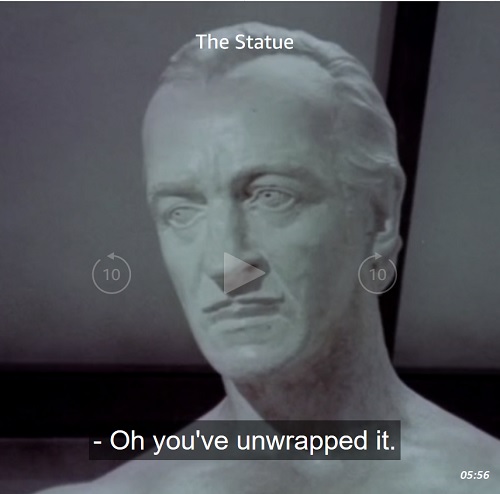
For Abraham Warburg —
"Que cantaba el Rey David."
Tuesday, September 18, 2018
Monday, September 17, 2018
Lying at the Axis
Or: Zero Dark Zero

|
" Lying at the axis of everything, zero is both real and imaginary. Lovelace was fascinated by zero; as was Gottfried Leibniz, for whom, like mathematics itself, it had a spiritual dimension. It was this that let him to imagine the binary numbers that now lie at the heart of computers: 'the creation of all things out of nothing through God's omnipotence, it might be said that nothing is a better analogy to, or even demonstration of such creation than the origin of numbers as here represented, using only unity and zero or nothing.' He also wrote, 'The imaginary number is a fine and wonderful recourse of the divine spirit, almost an amphibian between being and nonbeing.' "
— A footnote from page 229 of Sydney Padua's |
Sunday, September 16, 2018
Data
<h1 id="top"> Bacow Heads to Home State of Michigan In Quest to Fix Harvard’s Image Problem </h1> <div class="article-byline" style="display: none;"> By <a href='/writer/1213317/Kristine_E._Guillaume/'> Kristine E. Guillaume</a> and <a href='/writer/1213264/Jamie_D._Halper/'> Jamie D. Halper</a>, Crimson Staff Writers <time class="article-date" datetime="2018-09-16T23:04:29-04:00" title="Updated September 16, 2018 at 11:04p.m."> September 16, 2018 </time> </div>
Husserl for Beginners
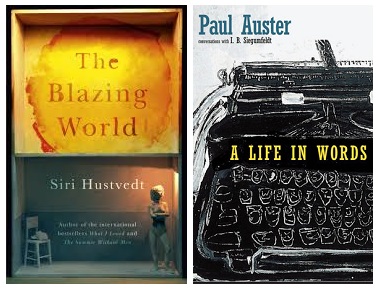
See also Trivial + Affine and Eidetic Reduction.
Saturday, September 15, 2018
Satire on Saturday Night
See as well some other remarks from March 28, 2014.
Ig Nobel “One Plus One”
Jean-Luc Godard in this journal on Thursday —
"I perceived . . . cinema is that which is between things,
not things [themselves] but between one and another."
Also on Thursday —
"Scientific luminaries gathered at Harvard University’s
historic Sanders Theatre on Thursday to honor
notable achievements this year…. It was the
28th First Annual Ig Nobel Prize Ceremony …."
Axioms
Update of 10:18 AM the same day —
See also Logicomix in this journal and, at Harvard,
http://www.math.harvard.edu/~mazur/ —
-
September 6, 2018: Eric Maskin, Amartya Sen and I
are giving a course this semester: 'Axiomatic Reasoning'
(PHIL 273B). Introduction to Axiomatic Reasoning gives a
general sense of what we intend to cover.
Update of 10:48 AM the same day —
See Log24 on the date of Tieszen's death.
Eidetic Reduction in Geometry
|
"Husserl is not the greatest philosopher of all times. — Kurt Gödel as quoted by Gian-Carlo Rota Some results from a Google search — Eidetic reduction | philosophy | Britannica.com Eidetic reduction, in phenomenology, a method by which the philosopher moves from the consciousness of individual and concrete objects to the transempirical realm of pure essences and thus achieves an intuition of the eidos (Greek: “shape”) of a thing—i.e., of what it is in its invariable and essential structure, apart … Phenomenology Online » Eidetic Reduction
The eidetic reduction: eidos. Method: Bracket all incidental meaning and ask: what are some of the possible invariate aspects of this experience? The research Eidetic reduction – New World Encyclopedia Sep 19, 2017 – Eidetic reduction is a technique in Husserlian phenomenology, used to identify the essential components of the given phenomenon or experience. |
For example —
The reduction of two-colorings and four-colorings of a square or cubic
array of subsquares or subcubes to lines, sets of lines, cuts, or sets of
cuts between* the subsquares or subcubes.
See the diamond theorem and the eightfold cube.
* Cf. posts tagged Interality and Interstice.
Friday, September 14, 2018
Warburg at Cornell, Continued
Denkraum
Underlying the I Ching structure is the finite affine space
of six dimensions over the Galois field with two elements.
In this field, "1 + 1 = 0," as noted here Wednesday.
See also other posts now tagged Interstice.
Thursday, September 13, 2018
Iconology of the Interstice
The title is from the 2013 paper by Latsis in the previous post.
The symmetries of the interstices at right underlie
the symmetries of the images at left.
Godard and Interality
The previous post, "One Plus One," suggests some further
art-historical remarks on interality —
|
From Third Text , 2013, Vol. 27, No. 6, pp. 774–785 — "Genealogy of the Image in Histoire(s) du Cinéma : Godard, Warburg and the Iconology of the Interstice" * * * * P. 775 — My discussion will focus on the significance of the concept of the ‘space in-between,’ its importance for Godard’s work and its role in a relational historiography of images more broadly. I hope to corroborate how Godard functions as a twenty-first century archaeologist of the moving image, constructing a meta-cinematic collage that, while consisting of an indexing of (almost exclusively) pre-existing filmic samples, ends up becoming a hybrid work of art in its own right. Godard, in the final analysis, expands the Warburgian programme of iconology into that of a cinematographic iconology of the interstice. * * * * P. 777 — Godard conceives of the image only in the plural, in the intermediate space between two images, be it a prolonged one (in Histoire(s) there are frequent instances of black screens) or a non-existent one (superimposition, co-presence of two images on screen). He comments: ‘[For me] it’s always two, begin by showing two images rather than one, that’s what I call image, the one made up of two’ [18] and elsewhere, ‘I perceived . . . cinema is that which is between things, not things [themselves] but between one and another.’ [19] 18. Jean-Luc Godard and Youssef Ishaghpour, "Archéologie du cinéma et mémoire du siècle," Farrago ,Tours, 2000, p. 27. The title of this work is reflective of the Godardian agenda that permeates Histoire(s) . 19. Jean-Luc Godard, "Introduction à une véritable histoire du cinéma," Albatros , Paris,1980, p. 145 * * * * P. 783 — If it is in ‘the in-between’ that thought is born, then for Godard cinematography as ‘a form that thinks . . . was born with the advent of modern painting.’ [62] 62. Godard and Ishaghpour, op. cit., pp 45–46. * * * * P. 785 — Warburg commented on the signification of the black spaces that he placed between images in his analysis of the network of intervals in Mnemosyne , by quoting Johann Wolfgang Goethe’s dictum ‘the truth inhabits the middle space.’ [68] This citation induces a feeling of déjà-vu for the viewer of Histoire(s). The link was not missed by Warburg himself, as one of his diary entries testifies: ‘We can compare this phenomenon [the iconology of the interval] to that of the cinematic montage, the domain of the interpretation is an intervallic one.’ [69] 68. Warburg, Mnemosyne , pp 135–146. 69. Warburg is quoted in Didi-Huberman, L’image survivante, p. 503. (Georges Didi-Huberman, L’image survivante. Histoire de l’art et temps des fantômes selon Aby Warburg , Minuit, Paris, 2002) |
Wednesday, September 12, 2018
Tuesday, September 11, 2018
By Fritz Leiber
Monday, September 10, 2018
Your OS

|
"Alan Watts wrote of The Making of a Counter Culture in the San Francisco Chronicle in 1969, 'If you want to know what is happening among your intelligent and mysteriously rebellious children, this is the book. The generation gap, the student uproar, the New Left, the beats and hippies, the psychedelic movement, rock music, the revival of occultism and mysticism, the protest against our involvement in Vietnam, and the seemingly odd reluctance of the young to buy the affluent technological society—all these matters are here discussed, with sympathy and constructive criticism, by a most articulate, wise, and humane historian.' " |
"Please wait as your operating system is initiated."
Sunday, September 9, 2018
Plan 9 Continues.
"The role of Desargues's theorem was not understood until
the Desargues configuration was discovered. For example,
the fundamental role of Desargues's theorem in the coordinatization
of synthetic projective geometry can only be understood in the light
of the Desargues configuration.
Thus, even as simple a formal statement as Desargues's theorem
is not quite what it purports to be. The statement of Desargues's theorem
pretends to be definitive, but in reality it is only the tip of an iceberg
of connections with other facts of mathematics."
— From p. 192 of "The Phenomenology of Mathematical Proof,"
by Gian-Carlo Rota, in Synthese , Vol. 111, No. 2, Proof and Progress
in Mathematics (May, 1997), pp. 183-196. Published by: Springer.
Stable URL: https://www.jstor.org/stable/20117627.
Related figures —
Note the 3×3 subsquare containing the triangles ABC, etc.
"That in which space itself is contained" — Wallace Stevens
Saturday, September 8, 2018
Friday, September 7, 2018
The Enormous Snowflake
A literary reference suggested by the previous post and by
today's 2 AM post "Show" —
See also Snowflake in this journal.
Carnival and Mystery
A Square for Sims
The American Mathematical Society on Wednesday, September 5,
reported a death from October 23 last year —
See also Higman-Sims and 5×5 in this journal.
Show
Thursday, September 6, 2018
Identity Crisis
(Continued from 12 AM Sept. 4)
|
New York Times Sept. 6, 2018 Identity — whatever that even means — has been having a moment, lately. The political climate forces us all to decide grimly what bunker will welcome us, and the new culture wars spur people to define themselves before somebody else does it for them to possibly violent effect. Identity may be abstract and elusive, but that doesn’t mean it doesn’t have real-world consequences. So our recommended titles this week turn a spotlight on the subject, from Francis Fukuyama’s “Identity” to Kwame Anthony Appiah’s “The Lies That Bind” to two books about identity politics on college campuses: “The Splintering of the American Mind,” by William Egginton, and “The Coddling of the American Mind,” by Greg Lukianoff and Jonathan Haidt. (Those similar titles are no coincidence: Both books hark back to Allan Bloom’s classic “The Closing of the American Mind.”) We also have a book about the Spanish man who for decades falsely claimed to be a Holocaust survivor, and a joint biography of the mother and daughter who gave their names to the Myers-Briggs personality test. In other realms, there’s a biography of the tennis legend Arthur Ashe; new fiction from Gary Shteyngart, Ben Marcus and Tsitsi Dangarembga; and an essay collection about the role of the “dead girl” in popular culture, which posits that — in that case, anyway — the absence of identity is the whole point.
Gregory Cowles |
See also Identity + Paz in this journal.
Wednesday, September 5, 2018
Multifaceted Narrative

See also, in this journal, 23-cycle.
Update of Sept. 6, 2018, 9:05 AM ET: "The Cubist Method" —
Multifaceted narrative by James Joyce —
Multifaceted structures in pure mathematics, from Plato and R. T. Curtis —

Midnight Art
See also 12 AM Sept. 4 in this journal, "Identity Crisis."
Related material — "Overarching" in this journal.
Update of 4:12 AM ET —
The name of the New Yorker artist in the Identity Crisis post,
Tamara Shopsin, has now been added to the illustrated excerpt.
See as well . . .
https://www.nytimes.com/2018/09/04/obituaries/
kenny-shopsin-dead.html.
itemprop="datePublished"
content="2018-09-04T22:17:59.000Z"
Tuesday, September 4, 2018
MBTI at the Church of St. Frank*
Monday, September 3, 2018
Wolfenstein
Sunday, September 2, 2018
Saturday, September 1, 2018
Another 48 Hours

Backstory: See The Plaid Overnight Case in this journal.
See as well a post from 10:16 PM ET Thursday, August 30, 2018.
Nicht Spielerei
"The absence of adults forces children to practice their social skills."
This is from . . .
See also . . .

The Enlivened Obituary
" Martin Shubik, an economist whose prescient visions
of a computerized world and pioneering applications
of game theory to everyday life enlivened what has been
described as the dismal science, died on Aug. 22 at his
home in Branford, Conn. He was 92."
— Sam Roberts in The New York Times yesterday
From Sylvia Nasar's A Beautiful Mind —
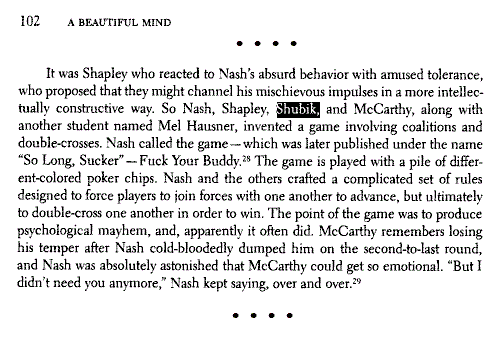
Ron Shaw — D. 21 June 2016
The date of Ron Shaw's 2016 death appears to be June 21:
All other Internet sources I have seen omit the June 21 date.
This journal on that date —
Friday, August 31, 2018
Perception of Number
Review of yesterday's post Perception of Space —
From Harry Potter and the Philosopher's Stone (1997),
republished as "… and the Sorcerer's Stone ," Kindle edition:
In a print edition from Bloomsbury (2004), and perhaps in the
earliest editions, the above word "movements" is the first word
on page 168:
Click the above ellipse for some Log24 posts on the eightfold cube,
the source of the 168 automorphisms ("movements") of the Fano plane.
"Refined interpretation requires that you know that
someone once said the offspring of reality and illusion
is only a staggering confusion."
— Poem, "The Game of Roles," by Mary Jo Bang
Related material on reality and illusion —
an ad on the back cover of the current New Yorker —

"Hey, the stars might lie, but the numbers never do." — Song lyric
Thursday, August 30, 2018
Twenty Years
This post was suggested by the final inside page, 23,
of next Sunday's New York Times Book Review ,
"Memorabilia/ Happy 20th Anniversary, Harry Potter."

From VOA Learning English, June 26, 2017 —
|
J.K. Rowling's Harry Potter Books . . . . " J.K. Rowling’s first book about Harry and his friends at Hogwarts School of Witchcraft and Wizardry was released on June 26, 1997. The publisher, Bloomsbury, only released 500 copies to stores in Britain and sent 500 to British libraries. Now, thanks to 450 million more copies of the first book and six others, Harry Potter and his friends are known around the world. Adults and children loved the books. But 12 publishers rejected the first one, known in many countries as 'Harry Potter and the Philosopher’s Stone.' " . . . . |
See as well this journal on June 26, 2017 in
posts now tagged Ron Shaw In Memoriam.
Perception* of Space

* A footnote in memory of a dancer who reportedly died
yesterday, August 29 — See posts tagged Paradigm Shift.
"Birthday, death-day — what day is not both?" — John Updike
Tuesday, August 28, 2018
For St. Augustine’s Day
Whether the word "condescension" functions as purple Kool-Aid
here or in the previous post, the reader may decide.
Monday, August 27, 2018
Geometry and Simplicity
From …
Thinking in Four Dimensions
By Dusa McDuff
"I’ve got the rather foolhardy idea of trying to explain
to you the kind of mathematics I do, and the kind of
ideas that seem simple to me. For me, the search
for simplicity is almost synonymous with the search
for structure.
I’m a geometer and topologist, which means that
I study the structure of space …
. . . .
In each dimension there is a simplest space
called Euclidean space … "
— In Roman Kossak, ed.,
Simplicity: Ideals of Practice in Mathematics and the Arts
(Kindle Locations 705-710, 735). Kindle Edition.
For some much simpler spaces of various
dimensions, see Galois Space in this journal.
Children of the Six Sides
From the former date above —
|
Saturday, September 17, 2016 |
From the latter date above —
|
Tuesday, October 18, 2016
Parametrization
|
From March 2018 —
Sunday, August 26, 2018
Mathematics and Narrative: Queensland
Saturday, August 25, 2018
Schoolgirl Problem
“Waugh, Orwell. Orwell, Waugh.”
Suggested by a review of Curl on Modernism —
Related material —
Waugh + Orwell in this journal and …
Friday, August 24, 2018
The Wandelweiser Manifesto
Academic and Transformations
“1, 2, 3” . . .
Thursday, August 23, 2018
Wednesday, August 22, 2018
Castle Rock
Tuesday, August 21, 2018
Purported Endgame

A search for "IMA" yields, at ima.org.au . . .
"Since 1975, the Institute of Modern Art (IMA) has been Queensland’s
leading independent forum for art and its discourses." … And …
"Clog, therefore, purple Jack and crimson Jill."
— Wallace Stevens
Available Light
Monday, August 20, 2018
A Wheel for Ellmann
The title was suggested by Ellmann's roulette-wheel analogy
in the previous post, "The Perception of Coincidence."
The Perception of Coincidence
Ellmann on Joyce and 'the perception of coincidence' —
"Samuel Beckett has remarked that to Joyce reality was a paradigm,
an illustration of a possibly unstatable rule. Yet perhaps the rule
can be surmised. It is not a perception of order or of love; more humble
than either of these, it is the perception of coincidence. According to
this rule, reality, no matter how much we try to manipulate it, can only
assume certain forms; the roulette wheel brings up the same numbers
again and again; everyone and everything shift about in continual
movement, yet movement limited in its possibilities."
— Richard Ellmann, James Joyce , rev. ed.. Oxford, 1982, p. 551
Sunday, August 19, 2018
Possible Permutations
John Calder, an independent British publisher who built a prestigious list
of authors like Samuel Beckett and Heinrich Böll and spiritedly defended
writers like Henry Miller against censorship, died on Aug. 13 in Edinburgh.
He was 91.
— Richard Sandomir in the online New York Times this evening
On Beckett —
Also on August 13th —
The Search for Veritas

See as well the search for Veritas in this journal.
Apollo and the Furies
Narration by the fictional schoolgirl Pagan Moore in a novel
apparently first published on March 4, 2004 —
|
"Now, can anyone else tell me or shall I ask Miss Moore again to help us out?” “Apollo is a symbol for the male, the rational, the young, and the civilized. The Furies represent the female, the violent, the old, and the primal. Aeschylus captures a mythical moment in history, one in which the world was torn between a savage and archaic past and the bold new order of Greek civilization, the young Olympian gods, and rationality. The difficulty of the struggle between these two worlds is dramatized by the cycle of violence in the House of Atreus and the clash between Apollo and the Furies.” No one giggled after Dank finished.
—Existence (first novel of a trilogy), pp. 80-81. |
Update at 1:37 PM ET the same day —
A check for the source of the above speech yields …
"Apollo is a symbol for the male, the rational, the young, and the civilized.
The Furies represent the female, the violent, the old, and the primal."
This passage is from
https://www.gradesaver.com/the-eumenides/study-guide/themes.
From the citation data there —
"By Borey, Eddie. 'The Eumenides Themes.'
GradeSaver, 24 October 2000 Web."
Saturday, August 18, 2018
Pagan Song Trilogy
Friday, August 17, 2018
Hogwarts Peak
Or: Misery, Jessica … Jessica, Misery .


Related material from The Harvard Crimson —
"The beach and the castle on the hill and the waves
would always be here, always moving, always changing,
but always constant."
— Robert Miranda, "The Simplicity of Waves," August 8, 2018
Related material on waves (i.e. , "Fourier's laboratory") —
See also this journal on August 8.



















































